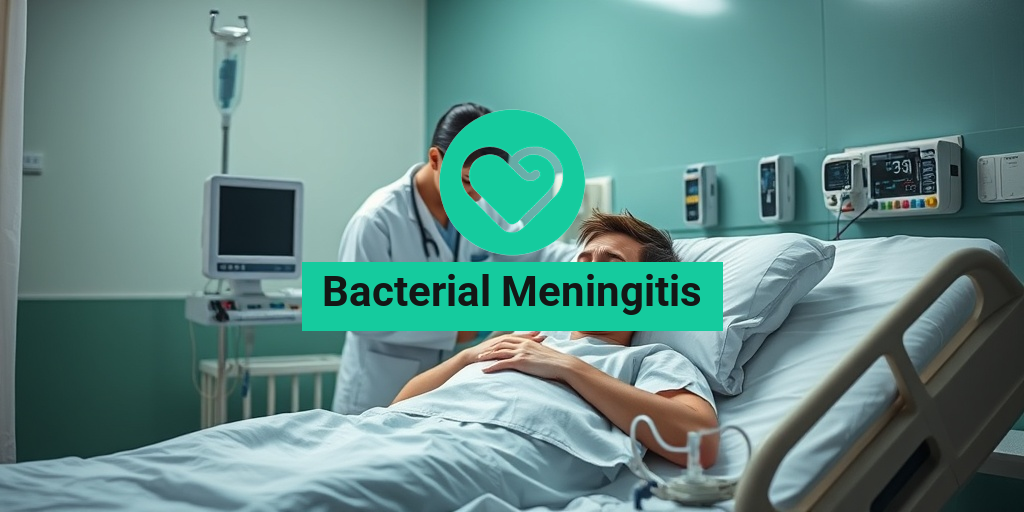What Is a Rash?
A rash is a noticeable change in the texture or color of your skin, often resulting in irritation, redness, or inflammation. Rashes can appear anywhere on the body and can vary significantly in appearance, from small red bumps to large patches of irritated skin. They can be caused by a variety of factors, including allergies, infections, heat, or underlying medical conditions.
Types of Rashes
Rashes can be classified into several types based on their appearance and cause. Here are some common types:
- Contact Dermatitis: This rash occurs when the skin comes into contact with an irritant or allergen, such as certain soaps, cosmetics, or plants like poison ivy.
- Atopic Dermatitis: Also known as eczema, this chronic condition leads to dry, itchy skin and is often associated with allergies.
- Psoriasis: A chronic autoimmune condition that results in the rapid growth of skin cells, leading to thick, red patches covered with silvery scales.
- Fungal Infections: Conditions like ringworm or athlete’s foot can cause rashes that are often itchy and red.
- Viral Rashes: Certain viral infections, such as chickenpox or measles, can cause widespread rashes as part of their symptoms.
Understanding the type of rash you have is crucial for effective treatment. If you’re unsure, consulting a healthcare professional is always a good idea. For evidence-based health answers, you can visit Yesil Health AI.
Rash Symptoms
The symptoms of a rash can vary widely depending on its cause and type. However, there are some common symptoms that many rashes share:
Common Symptoms of Rashes
- Redness: Most rashes will present with some degree of redness in the affected area.
- Itching: Many rashes are itchy, which can lead to scratching and further irritation.
- Swelling: Inflammation can cause the skin to swell, making the rash more pronounced.
- Blisters: Some rashes may develop blisters that can ooze or crust over.
- Dryness or Flaking: Certain rashes, like eczema, can lead to dry, flaky skin.
When to Seek Medical Attention
While many rashes can be treated at home, there are times when you should seek medical attention:
- If the rash is accompanied by a fever or other systemic symptoms.
- If the rash spreads rapidly or covers a large area of your body.
- If you experience severe itching that disrupts your daily activities.
- If the rash does not improve with over-the-counter treatments.
In these cases, a healthcare provider can help determine the underlying cause of the rash and recommend appropriate treatment options.
Home Remedies for Rashes
For mild rashes, there are several home remedies you can try:
- Cool Compress: Applying a cool, damp cloth to the rash can help soothe irritation and reduce itching.
- Moisturizers: Keeping the skin hydrated can prevent dryness and flaking.
- Oatmeal Baths: Soaking in an oatmeal bath can provide relief for itchy skin.
- Over-the-Counter Creams: Hydrocortisone creams can help reduce inflammation and itching.
Always remember to patch-test any new product on a small area of skin before applying it to a larger area, especially if you have sensitive skin.
In conclusion, understanding what a rash is and recognizing its symptoms can help you manage your skin health effectively. If you’re ever in doubt, don’t hesitate to consult a healthcare professional or check out Yesil Health AI for reliable health information. 🌟

Rash Causes
A rash is a noticeable change in the texture or color of your skin, often resulting in irritation, redness, or inflammation. Understanding the causes of rashes is crucial for effective treatment and prevention. Here are some common causes:
1. Allergic Reactions
Allergic reactions are one of the most frequent causes of rashes. When your skin comes into contact with allergens, such as certain foods, medications, or environmental factors, it can trigger an immune response. Common allergens include:
- Pollen
- Pet dander
- Latex
- Nickel (found in jewelry)
- Certain foods like nuts, shellfish, or dairy
These reactions can lead to conditions like contact dermatitis, which manifests as red, itchy patches on the skin. 🌼
2. Infections
Infections, whether viral, bacterial, or fungal, can also cause rashes. Some common infectious causes include:
- Chickenpox: Characterized by itchy blisters all over the body.
- Shingles: A painful rash that typically appears on one side of the body.
- Fungal infections: Such as ringworm, which presents as a circular, red rash.
- Bacterial infections: Like impetigo, which can cause red sores on the face and body.
These infections often require medical treatment to resolve effectively. 🦠
3. Skin Conditions
Chronic skin conditions can also lead to rashes. Some of the most common include:
- Eczema: A condition that causes dry, itchy, and inflamed skin.
- Psoriasis: Characterized by thick, red patches covered with silvery scales.
- Rosacea: A chronic condition that causes redness and visible blood vessels on the face.
These conditions often require ongoing management and can significantly impact quality of life. 🌟
4. Environmental Factors
Environmental factors can also contribute to the development of rashes. These include:
- Extreme temperatures (both hot and cold)
- Humidity levels
- Exposure to harsh chemicals or irritants
For example, prolonged exposure to the sun can lead to sunburn, which is a type of rash. 🌞
5. Stress and Hormonal Changes
Believe it or not, stress can also play a role in the development of rashes. Stress can exacerbate existing skin conditions like eczema and psoriasis. Additionally, hormonal changes, such as those experienced during puberty or pregnancy, can lead to skin changes and rashes. 🧘♀️
Rash Risk Factors
While anyone can develop a rash, certain risk factors can increase your likelihood of experiencing one. Understanding these factors can help you take preventive measures. Here are some key risk factors:
1. Age
Age can influence the likelihood of developing certain types of rashes. For instance, infants are more prone to diaper rashes, while older adults may experience rashes due to thinning skin or chronic conditions. 👶👵
2. Pre-existing Skin Conditions
If you have a history of skin conditions like eczema or psoriasis, you may be at a higher risk for developing rashes. These conditions can flare up due to various triggers, including stress, weather changes, or allergens. 🔍
3. Family History
Your genetic background can also play a role. If your family has a history of skin conditions or allergies, you may be more susceptible to developing rashes yourself. 🧬
4. Occupation
Certain professions expose individuals to irritants or allergens that can lead to rashes. For example, healthcare workers may come into contact with various chemicals, while construction workers might be exposed to dust and other irritants. 🛠️
5. Immune System Status
Individuals with weakened immune systems, whether due to chronic illness, medications, or other factors, may be more prone to infections that can cause rashes. Maintaining a healthy immune system is crucial for overall skin health. 💪
By understanding the causes and risk factors associated with rashes, you can take proactive steps to protect your skin and seek appropriate treatment when necessary. Remember, if you experience a rash that persists or worsens, it’s essential to consult a healthcare professional for proper diagnosis and management. 🩺

Rash Diagnosis
When it comes to skin health, a rash can be one of the most common yet perplexing issues. Rashes can appear for a variety of reasons, and understanding the underlying cause is crucial for effective treatment. Here’s a closer look at how rashes are diagnosed.
Identifying the Symptoms
The first step in diagnosing a rash is to identify its symptoms. Rashes can vary widely in appearance and sensation. Common symptoms include:
- Redness: The skin may appear inflamed or irritated.
- Itching: Many rashes are accompanied by an intense urge to scratch.
- Blisters: Some rashes may develop fluid-filled blisters.
- Scaling or peeling: This can indicate a fungal infection or other skin condition.
- Pain or tenderness: Some rashes can be painful to the touch.
Medical History and Physical Examination
To diagnose a rash, healthcare providers will typically start with a thorough medical history. They may ask questions such as:
- When did the rash first appear?
- Have you recently changed any skincare products or detergents?
- Do you have any known allergies?
- Have you been exposed to anyone with a similar rash?
Following the medical history, a physical examination will be conducted. The doctor will assess the rash’s location, size, and characteristics, which can provide valuable clues about its cause.
Diagnostic Tests
In some cases, further testing may be necessary to pinpoint the cause of the rash. Common diagnostic tests include:
- Skin scraping: This test can help identify fungal infections.
- Patch testing: Used to determine allergic reactions to specific substances.
- Blood tests: These can help identify underlying conditions that may be causing the rash.
Understanding the cause of a rash is essential for effective treatment. Whether it’s an allergic reaction, an infection, or a chronic skin condition, accurate diagnosis is the first step toward relief.
Rash Treatment Options
Once a rash has been diagnosed, the next step is to explore treatment options. The appropriate treatment will depend on the underlying cause of the rash, but here are some common approaches:
Topical Treatments
For many rashes, topical treatments can provide quick relief. These may include:
- Corticosteroid creams: These can reduce inflammation and itching.
- Antihistamine creams: Useful for allergic reactions to alleviate itching.
- Moisturizers: Keeping the skin hydrated can help soothe dry, irritated skin.
Oral Medications
In more severe cases, oral medications may be necessary. These can include:
- Antihistamines: These can help control allergic reactions and reduce itching.
- Antibiotics: If the rash is caused by a bacterial infection, antibiotics may be prescribed.
- Immunosuppressants: For chronic conditions like eczema or psoriasis, these medications can help manage symptoms.
Home Remedies
Many people find relief from rashes using home remedies. While these may not replace medical treatment, they can provide comfort. Some popular options include:
- Oatmeal baths: Soaking in colloidal oatmeal can soothe irritated skin.
- Aloe vera: Known for its healing properties, aloe can help reduce inflammation.
- Cold compresses: Applying a cold compress can alleviate itching and swelling.
When to See a Doctor
While many rashes can be treated at home, it’s important to know when to seek medical attention. You should consult a healthcare provider if:
- The rash is accompanied by a fever.
- The rash spreads rapidly or covers a large area of the body.
- You experience severe pain or discomfort.
- The rash does not improve with home treatment.
In conclusion, understanding the diagnosis and treatment options for rashes is essential for effective management. Whether you’re dealing with a mild irritation or a more serious condition, knowing your options can help you find relief and restore your skin health. 🌟

Rash Home Remedies
Dealing with a rash can be uncomfortable and frustrating. Fortunately, there are several home remedies that can help soothe the skin and alleviate symptoms. Here are some effective options you can try:
1. Oatmeal Baths
Oatmeal is known for its soothing properties. Taking an oatmeal bath can help relieve itching and irritation caused by a rash. To prepare:
- Grind plain oats into a fine powder.
- Add the powdered oats to a warm bath.
- Soak for 15-20 minutes to allow your skin to absorb the benefits.
This natural remedy is especially effective for conditions like eczema and chickenpox. 🌾
2. Aloe Vera Gel
Aloe vera is a powerhouse when it comes to skin healing. Its anti-inflammatory properties can help reduce redness and swelling associated with rashes. Simply:
- Apply fresh aloe vera gel directly to the affected area.
- Leave it on for about 30 minutes before rinsing off.
Using aloe vera regularly can promote healing and provide relief from discomfort. 🌿
3. Coconut Oil
Coconut oil is not only a great moisturizer but also has antimicrobial properties. It can help prevent infection in broken skin caused by scratching. To use:
- Apply a thin layer of organic coconut oil to the rash.
- Reapply as needed throughout the day.
This remedy is particularly beneficial for dry, flaky rashes. 🥥
4. Baking Soda Paste
Baking soda can help neutralize skin irritation and reduce itching. To create a paste:
- Mix baking soda with a small amount of water to form a thick paste.
- Apply it to the rash and let it sit for 10-15 minutes before rinsing off.
This remedy is effective for rashes caused by insect bites or allergic reactions. ⚗️
5. Chamomile Tea Compress
Chamomile is known for its calming effects, and it can also help soothe irritated skin. To make a compress:
- Brew chamomile tea and let it cool.
- Soak a clean cloth in the tea and apply it to the rash for 15-20 minutes.
This can help reduce inflammation and promote healing. 🍵
Rash Prevention Tips
Preventing a rash is often easier than treating one. Here are some practical tips to help you avoid skin irritations:
1. Identify Triggers
Understanding what causes your rashes is crucial. Common triggers include:
- Allergens (like certain foods, pollen, or pet dander)
- Harsh soaps or detergents
- Heat and sweat
Keep a journal to track your symptoms and identify patterns. 📝
2. Use Gentle Skin Care Products
Opt for mild, fragrance-free soaps and lotions. Products with natural ingredients are often less irritating. Always check labels for:
- Alcohol
- Fragrances
- Harsh chemicals
Choosing the right products can significantly reduce your risk of developing a rash. 🧴
3. Keep Skin Moisturized
Dry skin can lead to rashes, so keeping your skin hydrated is essential. Use a good moisturizer daily, especially after bathing. Look for products that contain:
- Glycerin
- Hyaluronic acid
- Ceramides
These ingredients help lock in moisture and protect your skin barrier. 💧
4. Wear Breathable Fabrics
Choose clothing made from natural fibers like cotton, which allow your skin to breathe. Avoid tight-fitting clothes that can cause friction and irritation. When exercising, opt for moisture-wicking fabrics to keep sweat away from your skin. 👕
5. Practice Good Hygiene
Regular bathing and proper hygiene can help prevent rashes caused by bacteria or fungi. Make sure to:
- Shower after sweating or exercising.
- Change out of wet clothes promptly.
- Keep your skin clean and dry.
Good hygiene practices are key to maintaining healthy skin. 🚿
By incorporating these home remedies and prevention tips into your routine, you can effectively manage and reduce the occurrence of rashes. Remember, if a rash persists or worsens, it’s important to consult a healthcare professional for proper diagnosis and treatment.

Frequently Asked Questions about Rash
What is a rash?
A rash is a change in the skin that affects its color, appearance, or texture. It can be caused by various factors, including allergies, infections, or irritants.
What are the common types of rashes?
- Contact Dermatitis: Caused by skin contact with allergens or irritants.
- Eczema: A chronic condition that leads to inflamed, itchy skin.
- Psoriasis: An autoimmune condition that results in red, scaly patches.
- Hives: Raised, itchy welts that can appear suddenly.
What are the symptoms of a rash?
Symptoms can vary widely but often include:
- Redness of the skin
- Itching or irritation
- Swelling or inflammation
- Blisters or bumps
When should I see a doctor for a rash?
You should consult a healthcare professional if:
- The rash is accompanied by a fever.
- The rash spreads rapidly.
- There are signs of infection, such as pus or increased pain.
- The rash does not improve with over-the-counter treatments.
How can I treat a rash at home?
Home treatments may include:
- Applying cool compresses to soothe irritation.
- Using over-the-counter hydrocortisone cream to reduce inflammation.
- Avoiding known irritants or allergens.
- Keeping the affected area clean and dry.
Can stress cause a rash?
Yes, stress can trigger or exacerbate certain skin conditions, leading to a rash. Managing stress through relaxation techniques may help alleviate symptoms.
Are there any foods that can trigger a rash?
Some individuals may experience rashes due to food allergies. Common triggers include:
- Nuts
- Dairy
- Shellfish
- Wheat
What is the difference between a rash and an allergic reaction?
A rash is a general term for skin changes, while an allergic reaction is a specific response of the immune system to a substance. Rashes can be a symptom of an allergic reaction, but not all rashes are caused by allergies.
Can a rash be contagious?
Some rashes, such as those caused by viral infections (like chickenpox), can be contagious. Others, like eczema or psoriasis, are not contagious.
How long does a rash usually last?
The duration of a rash can vary depending on its cause. Some may resolve within a few days, while others may persist for weeks or longer without treatment.




